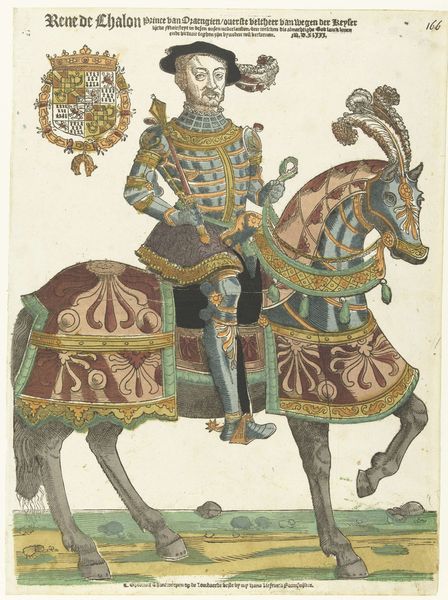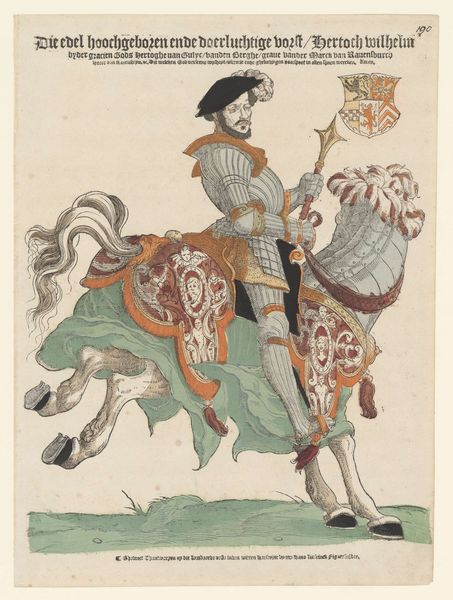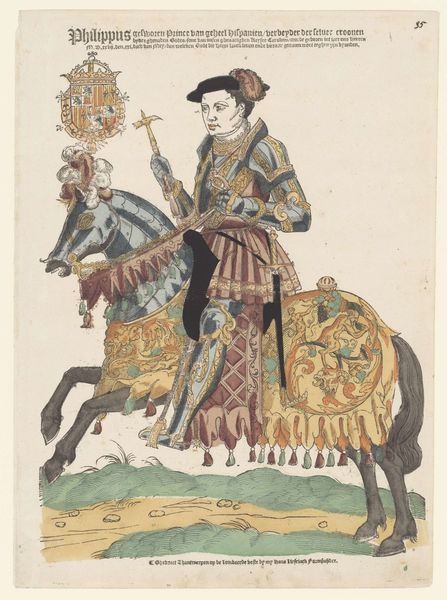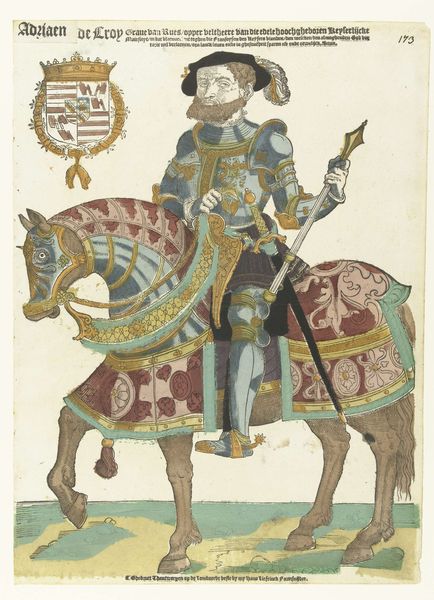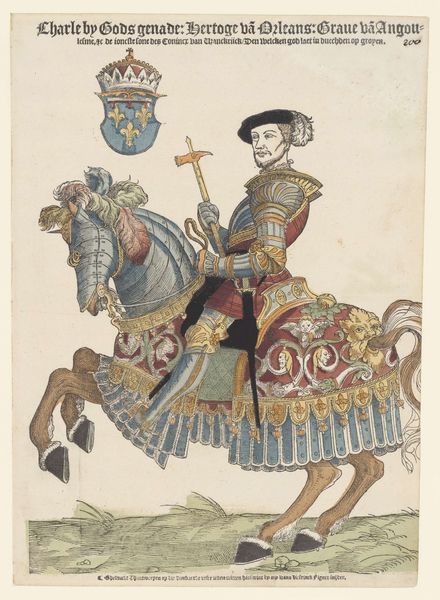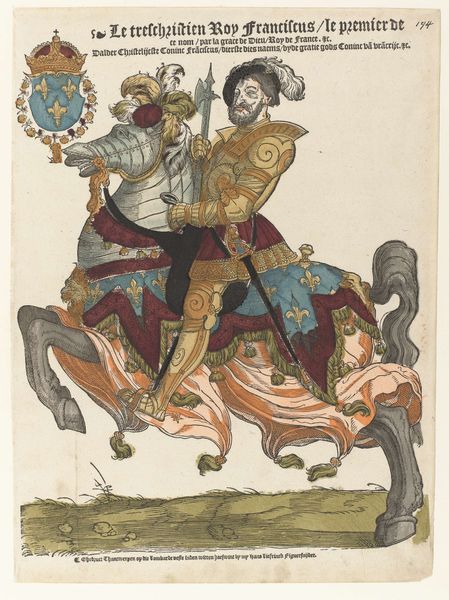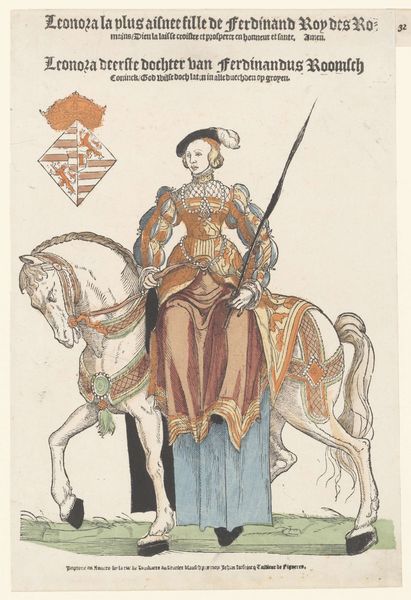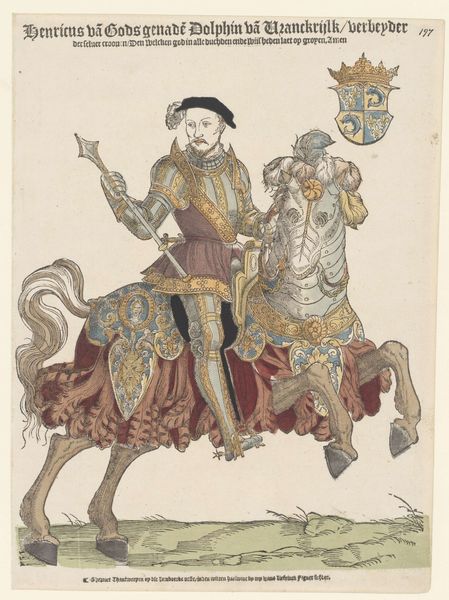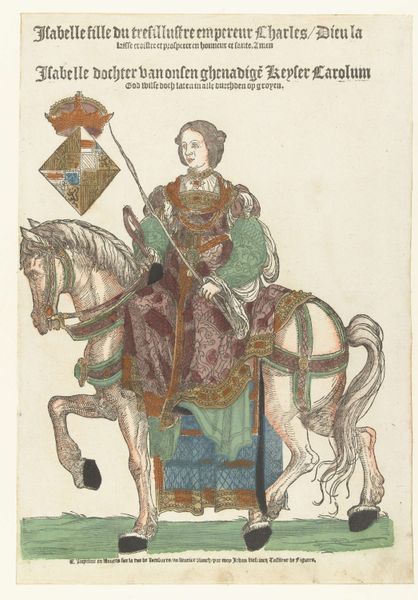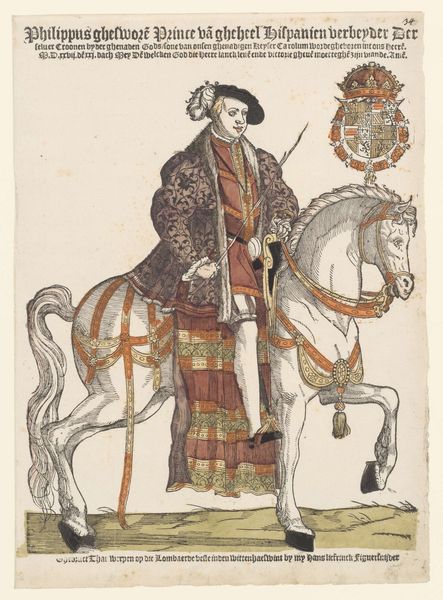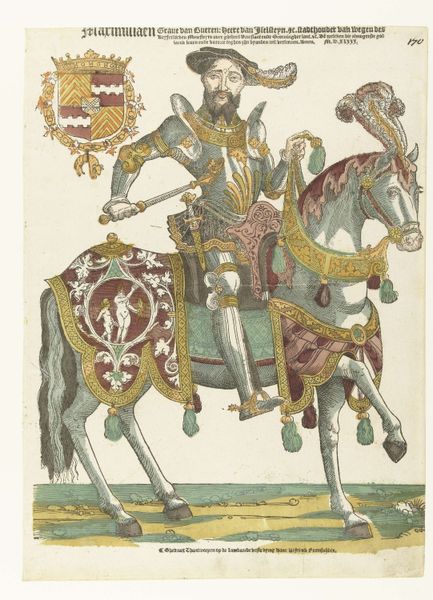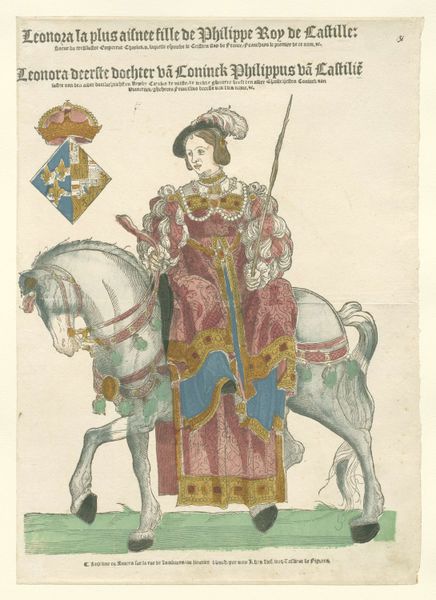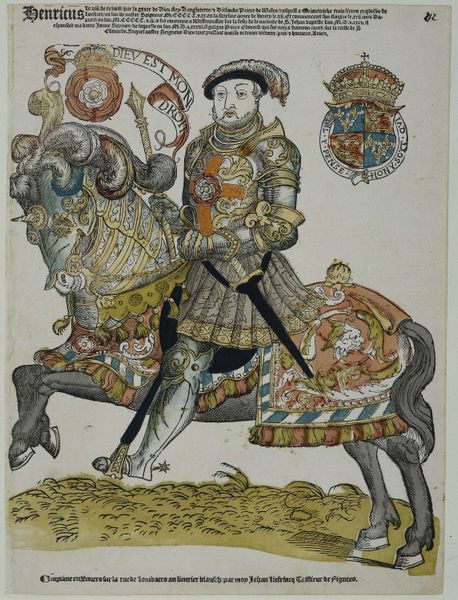
print, etching, engraving
#
portrait
# print
#
etching
#
traditional media
#
figuration
#
11_renaissance
#
line
#
watercolour illustration
#
history-painting
#
northern-renaissance
#
engraving
Dimensions: height 405 mm, width 295 mm
Copyright: Rijks Museum: Open Domain
This is Cornelis Anthonisz.'s woodcut print of Ferdinand I of Austria, made around 1550. Dominating the composition is Ferdinand, mounted on horseback, clad in armor, and holding a hammer. The hammer, a seemingly simple tool, bears the weight of cultural memory. It is a symbol deeply rooted in human history. From its utilitarian origins to its symbolic representation of power, the hammer transcends its physical form. Consider Thor's hammer, Mjolnir, from Norse mythology, a symbol of strength, protection, and divine authority. The hammer is a motif that speaks to our subconscious understanding of power, creation, and destruction. It represents the psychological impact of tools, which goes back to the Stone Age, and reveals how humankind learned to dominate the material world. Like many ancient symbols, the hammer’s meaning shifts and resurfaces, its psychological resonance enduring through the ages.
Comments
No comments
Be the first to comment and join the conversation on the ultimate creative platform.

